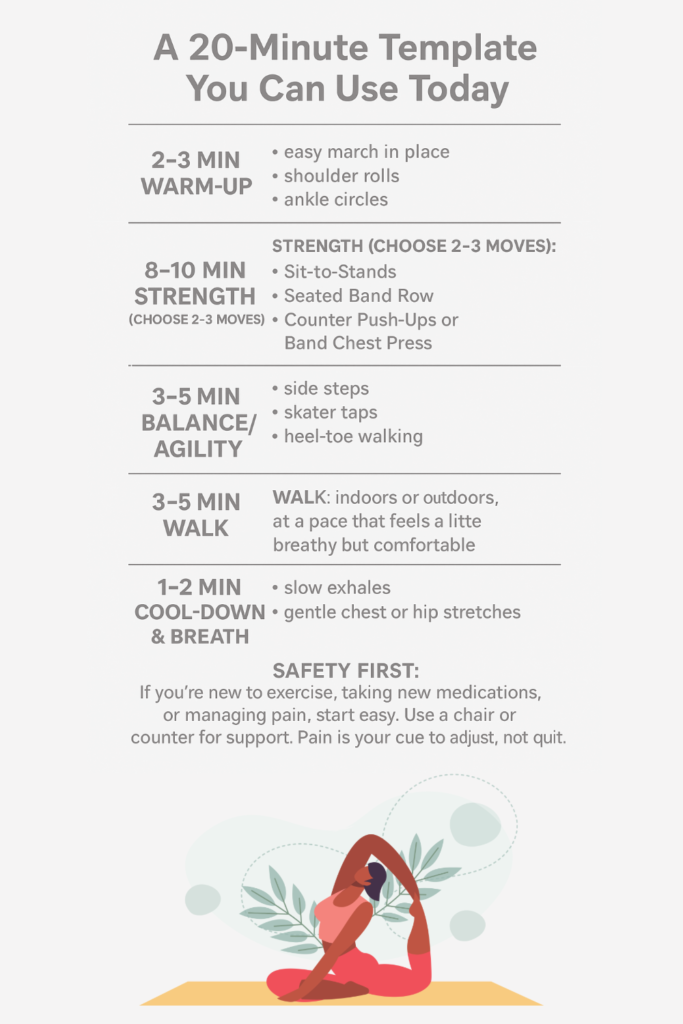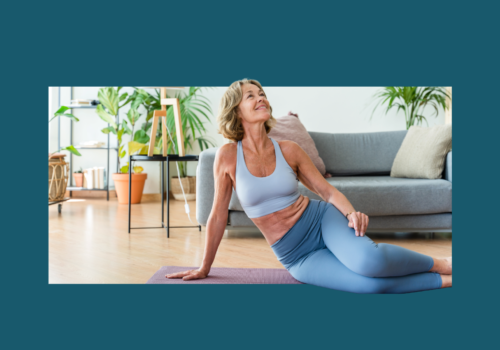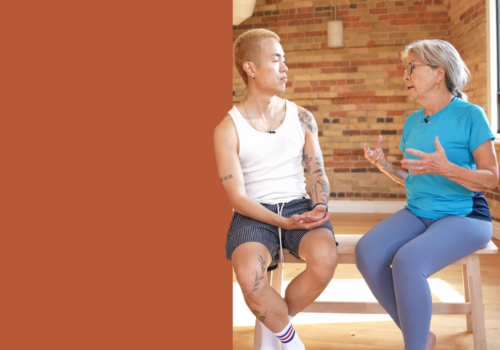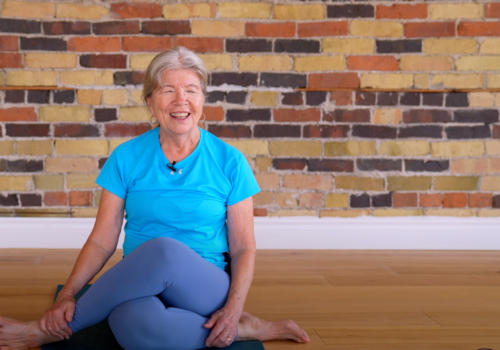Learn five proven tips to adapt workouts as you age: daily movement, safe strength twice weekly, balance, progress, and goals that keep you motivated.
You’re not alone — over half of women in this season are asking how to stay strong, steady, and joyful as life shifts. Studies show that trying new things later in life improves mood and life satisfaction, especially when movement and community come together. At Lifeshiift, we see aging as an invitation: more purpose, more adventure, more you.
This guide distills our recent community session with Vintage Fitness into five essentials you can start today — whether you’re returning after an injury, navigating a knee or hip replacement, or simply ready to feel better when you get up from the couch.
Why This Matters Now
Function first: Strong legs and core mean easier stairs, getting in and out of the car, and more confident walking.
Health span gains: Aim for about 150 minutes of moderate activity each week — roughly 30 minutes, five days a week — plus strength work twice a week. Short sessions count.
Bone and fall protection: Progressive resistance training supports bone health, while balance and agility work help reduce the risk of falls.
Community counts: Staying connected boosts motivation and protects both mental and physical health.
The Five Essentials
1. Consistency Beats Intensity
A little, most days, wins. Aim for 20 minutes of intentional movement daily — walking, gentle mobility, or a short cardio session — and let the wins stack up. On two of those days, add strength work (see the mini-plan below).
2. Treat Setbacks as Temporary
Surgery, illness, or a flare-up? You’re still in the story. Rest, re-enter with lighter movement, and rebuild. Real clients in their 70s, 80s, and even late 90s regained independence with this approach. Grit plus guidance works.
3. Make Strength Your Anchor
Strength training supports balance, posture, bone density, and daily function. You can use bodyweight, bands, or light dumbbells — what matters most is that the effort feels challenging and controlled.
Starter moves:
Sit-to-Stands (from a chair), slow and controlled
Seated Band Row for upper back and posture
Band Chest Press or Counter Push-Ups for chest and shoulders
Standing Heel Raises for ankle and calf strength
Perform 6–10 deliberate reps, rest, and repeat 2–3 sets. When it feels easy, tighten the band or add a little weight.
4. Progress on Purpose
As something gets easy, nudge up the difficulty — a thicker band, a lower chair, one more minute on your walk, or a gentle hill. Small, steady progress maintains momentum and signals your body to adapt.
5. Set Goals You Care About — Then Refresh Them
Tie movement to meaning: “Climb the museum stairs with my granddaughter,” “Carry groceries without help,” or “Walk the block without stopping.” Celebrate the milestone, then set a new one slightly out of reach. That’s how confidence compounds.
Balance and Agility: Your Built-In Fall Shield
Add side steps with a cross-behind (curtsy step), gentle “skater” taps, or ladder/“taped-box” footwork to rehearse quick direction changes. Start with a countertop or wall for support, and reduce support as you improve. These small drills keep your reflexes sharp and your balance steady.
A 20-Minute Template You Can Use Today
2–3 min Warm-Up: easy march in place, shoulder rolls, ankle circles
8–10 min Strength (choose 2–3 moves):
Sit-to-Stands
Seated Band Row
Counter Push-Ups or Band Chest Press
Standing Heel Raises
3–5 min Balance/Agility: side steps, skater taps, or heel-toe walking
3–5 min Walk: indoors or outdoors, at a pace that feels a little breathy but comfortable
1–2 min Cool-Down & Breath: slow exhales, gentle chest or hip stretches
Safety first: If you’re new to exercise, taking new medications, or managing pain, start easy. Use a chair or counter for support. Pain is your cue to adjust, not quit.
Motivation That Lasts
Know your “why.” Write it somewhere you’ll see it often.
Identity shift: “I’m a person who moves my body every day,” even for five minutes.
Accountability: text a friend after your session; celebrate the small wins.
Track feelings, not just numbers: notice how you move and sleep on days you exercise — it’s often the most convincing motivation.
Real People, Real Progress
From a 98-year-old who rebounded from a hip fracture to travel-loving grandparents who can still manage stairs in Paris, we see it every week: consistency and community change what’s possible. You can absolutely get stronger — at any age.
Want a Little Guidance?
Lifeshiift’s community events and resources are designed to make this feel doable — joyful, even. Join our newsletter for gentle weekly prompts, short follow-along videos, and local meetups that keep you moving and connected. Because aging well is easier — and a lot more fun — when we do it together.
Want tips and tools curated for women in later adulthood? Sign up today!









Leave a Reply